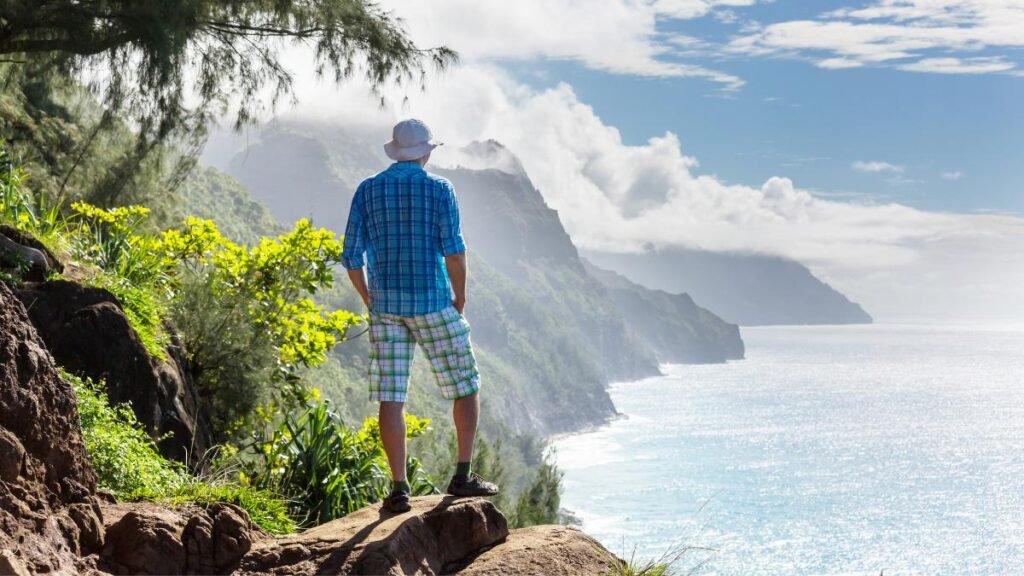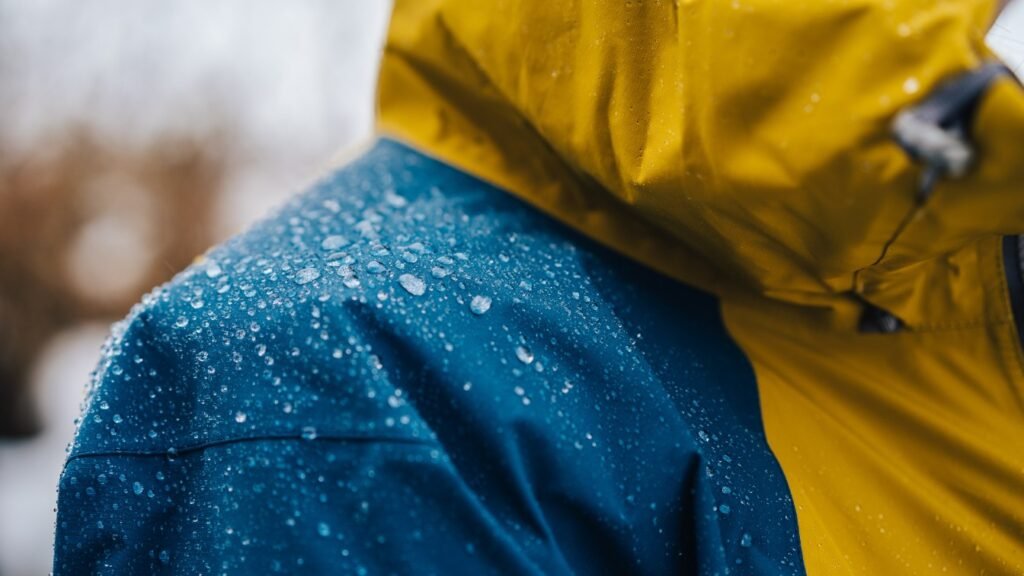Did you know that hypothermia and heat exhaustion are two of the most common health issues that hikers face? And more often than not, they’re a result of improper clothing choices.
Finding that sweet spot between overheating and freezing isn’t just a matter of comfort (although, comfort is king on the trail). But It’s about safety, too. The right hiking outfit serves as your first line of defense against the unpredictable elements of nature. Rain, wind, sun, insects – you name it, a good hiking outfit protects you from it all.
Let’s discuss the specifics of what to wear hiking, so you can fully enjoy your trip, safe and snug in the appropriate outfit.
What Clothes to Wear Hiking?
Here’s a quick checklist of what to wear hiking in any season:
- Hiking Boots/Shoes
- Hiking Pants
- Hiking Top
- Hiking Underwear
- Insulating Layers
- Rain Jacket
Hiking Boots/Shoes
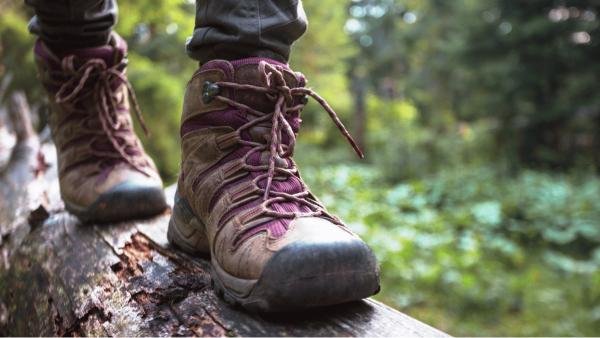
For beginners, sturdy, closed-toe athletic shoes are a great starting point. They’re comfortable, provide good support, and most importantly, they protect your feet.
But as you become more seasoned, you might want to consider hiking-specific footwear. These are designed with the rigors of the trail in mind, and they can make a huge difference to your hiking experience.
Types of Hiking Footwear
There are two main types of hiking footwear that you should know about: Trail Runners and Hiking Shoes, and Hiking Boots.
Trail Runners and Hiking Shoes are lightweight and flexible, making them perfect for less demanding terrains. They offer a good balance between comfort and durability.
On the other hand, Hiking Boots provide excellent ankle support, which is crucial when carrying heavy backpacks or hiking on uneven terrain. But not all boots are created equal. Some are better suited for short, easy hikes, while others are designed for long, challenging treks.
Alternatively, you can consider hiking sandals for hot weather hikes or when you’re crossing streams. However, they won’t provide as much protection or support as closed-toe shoes or boots.
Materials for Hiking Shoes
Do you go for waterproofing or breathability? It really depends on the weather conditions you’ll be hiking in. If you’re expecting rain or snow, waterproof materials are a must. But for hot, dry climates, breathability is key to avoid sweaty, uncomfortable feet.
The outsole material is another important factor. You want something that provides good grip and traction, especially on slippery or uneven surfaces.
Hiking Pants
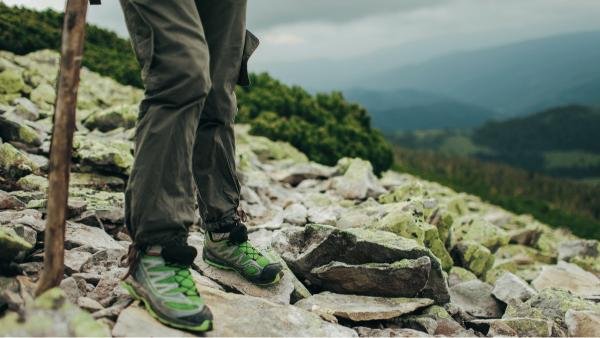
The second thing I recommend you to consider is investing in a good pair of hiking pants. I often hear questions like “why can’t I just wear my regular jeans or gym pants?” There are several reasons why hiking pants make a significant difference.
Freedom of Movement
Hiking pants are designed specifically for the kind of movement and exertion that hiking involves. They offer freedom of movement, which is something your regular jeans might not provide. When you’re climbing steep hills or jumping over rocks, you need pants that move with you, not restrict you.
They Are Durable and Resistant
Hiking pants are typically made from materials that are durable and resistant to the elements. This means they can withstand the rough and tumble of the trail, as well as any unexpected weather conditions. Many hiking pants are water-resistant, which can be a lifesaver if you get caught in a rain shower halfway up a mountain.
They Are Comfortable
Hiking can be a strenuous activity, and the last thing you want is to be uncomfortable. Many hiking pants are designed with features like gusseted crotches and articulated knees, which add to your comfort. They often have adjustable waistbands, so you can ensure a perfect fit.
They Have Multiple Pockets
Hiking pants usually come with multiple pockets. These can be incredibly useful for carrying small items like a compass, map, or snacks. This way, you don’t have to stop and rummage through your backpack every time you need something.
Hiking Top
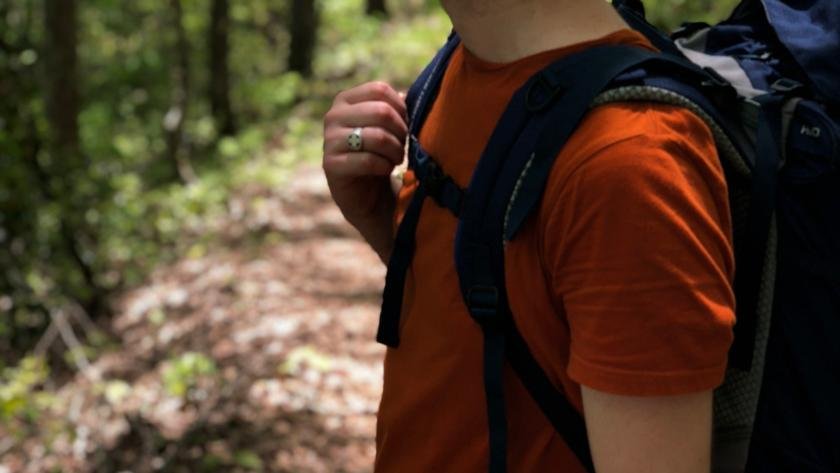
As you hike, your body heats up and perspires. A regular cotton t-shirt won’t do you any favors here. On the contrary, it’ll soak up the moisture and leave you feeling damp and uncomfortable.
But with a hiking top made from moisture-wicking materials, you can bid farewell to this issue. These tops pull the sweat away from your skin, allowing it to evaporate quickly and keep you dry.
Another thing to consider is durability. The wilderness is no place for delicate fabrics that tear easily. You need something robust that withstands the test of time (and nature). Top-quality hiking tops are designed to endure rough conditions and last longer than your average apparel.
Hiking Underwear

While hiking, your comfort starts with the first layer of clothing you put on – your underwear. Yes, hiking underwear is a thing and it’s more important than you may think!
Let’s dive into the reasons why:
- Sweat-Wicking Properties: Traditional cotton underwear just won’t cut it when you’re hiking. They soak up sweat like a sponge and take forever to dry. Hiking underwear, on the other hand, is typically made from synthetic materials or wool, both of which have excellent moisture-wicking properties.
- Reduced Chafing: There’s nothing worse than experiencing chafing halfway through a long hike. It can make every step feel like torture. But, with hiking underwear, you can minimize this risk. Most hiking underwear is designed with flat seams and stretchy fabrics that move with your body, reducing the chance of chafing.
- Temperature Regulation: Hiking underwear helps regulate your body temperature. Synthetic materials are great for hot weather because they’re lightweight and breathable. Wool, while a bit heavier, is a fantastic insulator, making it perfect for cold-weather hikes.
I’ve found that investing in a couple of pairs of good quality hiking underwear has made my hiking experience much more enjoyable. It may seem like a minor detail, but when you’re out on the trail for hours at a time, every bit of comfort counts.
Insulating Layers
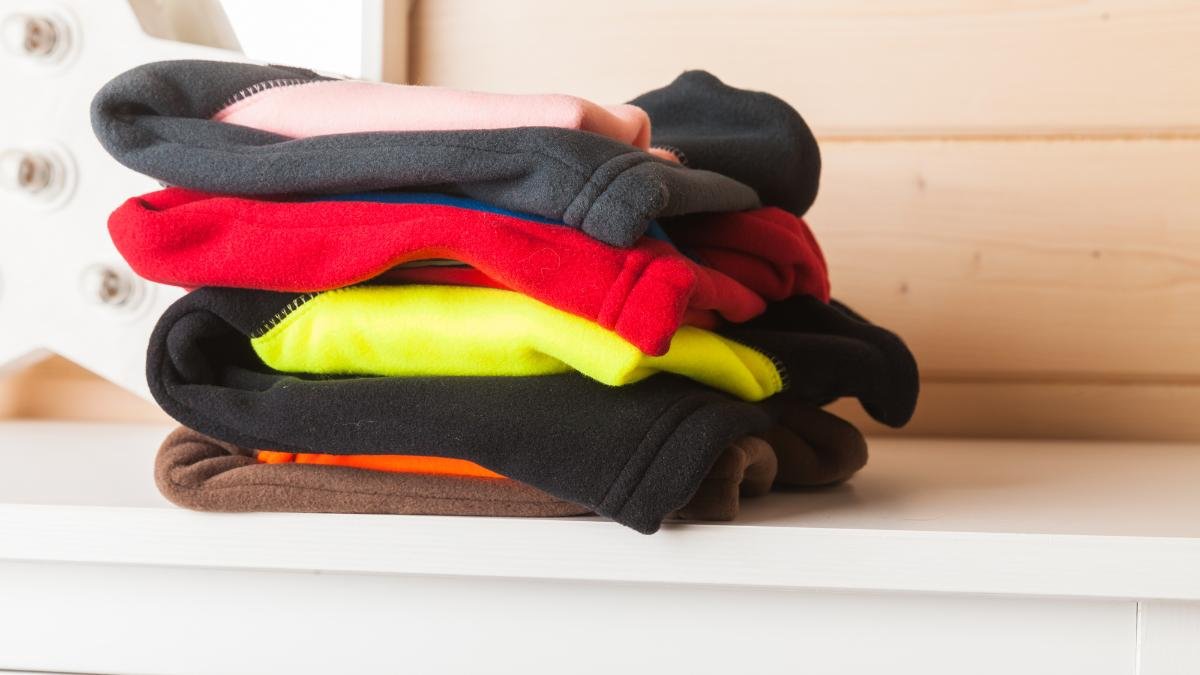
Insulating layers are designed to trap and hold heat emitted by your body. They provide a thermal barrier between you and the cold external environment.
For instance, if you’re on a hike in the snowy mountains and the temperature is freezing but you have an insulating layer on, you’ll be able to maintain your body heat and stay warm regardless.
There are several options you can choose from:
- Fleece Jackets are a popular choice among hikers. They’re lightweight, warm, and quick-drying. They come in a variety of thicknesses to suit different weather conditions.
- Down Jackets provide excellent insulation and are great for extremely cold conditions. They have a high warmth-to-weight ratio, which means they’re very warm without being heavy. The trade-off is that they lose their insulating properties when wet, so they’re not suitable for rainy or damp conditions.
- Synthetic Insulated Jackets are made from polyester fibers. They’re water-resistant and retain their insulating properties even when wet. This makes them a reliable choice for all types of weather conditions.
- Insulated Vests keep your core warm without restricting arm movement. They’re a good option if you need to stay warm but also want flexibility and freedom of movement.
- Softshell Jackets offer a combination of insulation and water resistance. They’re more breathable than down or synthetic insulated jackets, making them a good choice for active hikes where you’ll be sweating.
- Insulated Pants are essential for keeping your lower body warm during cold weather hikes. They come in both down and synthetic versions.
The effectiveness of your insulating layer depends on its fit. It should be snug enough to trap heat but loose enough to allow for movement and layering of clothing underneath.
Rain Jacket
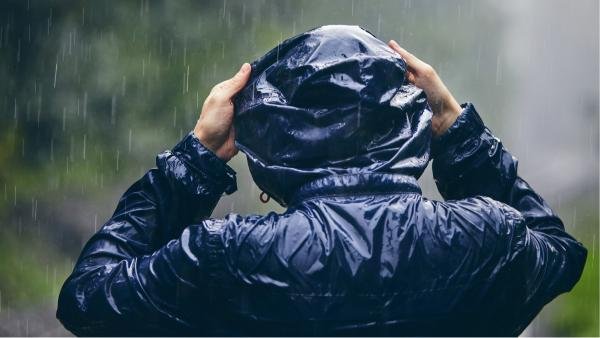
Investing in a high-quality rain jacket is a smart move. It protects you from sudden downpours and adds an extra layer of warmth when needed.
Keep in mind that a good hiking rain jacket does more than just keep you dry. Look for jackets with features like water-resistant zippers, adjustable hoods, and ventilation options to maximize comfort and functionality. It also should act as a windbreaker, keeping chilly winds at bay.
Most of them also come with breathable fabric, making sure you don’t turn into a walking sauna.
Hiking Accessories
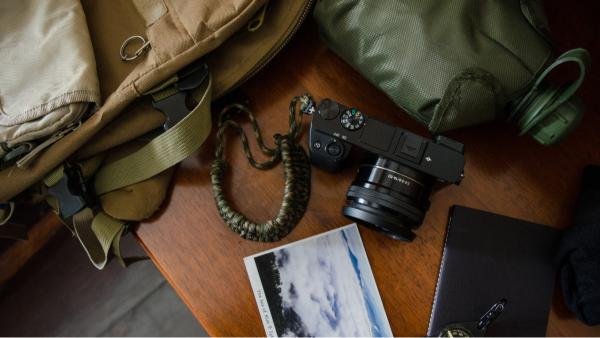
You don’t want to head out into the great outdoors without the right accessories. We’ve got a handy list of essential accessories that’ll keep you prepared for whatever Mother Nature throws your way.
- Hats: You might not think much about it, but a hat is a must-have for any hiker. It protects your head from the sun and keeps you warm in cold weather. It’s a great way to keep rain or snow out of your eyes.
- Sunglasses: You need to protect your eyes when you’re out on the trails. Sunglasses shield your eyes from harmful UV rays and prevent glare from disrupting your vision.
- Gloves: In cold weather, gloves are necessary. They keep your hands warm and dry, and they also provide a good grip if you’re using trekking poles or climbing.
- Leg Gaiters: If you’re hiking through snow or wet terrain, leg gaiters are a perfect choice. They keep your legs dry and prevent debris from entering your boots.
- Neck Gaiters: Just like leg gaiters, neck gaiters protect you from the elements. They keep your neck warm in cold weather and can be pulled up to cover your face in windy or dusty conditions.
- Daypack: A daypack is essential for carrying all your gear. Make sure you choose one that’s comfortable and has enough space for everything you need.
How do you Decide What to Wear Hiking?

You’ll be dealing with varying weather conditions, rough terrains, and long hours of physical activity. Your clothes should help you navigate these factors. They should keep you warm when it’s cold, cool when it’s hot, and dry when it’s wet. Plus, they should protect you from harmful UV rays, insect bites, and abrasive surfaces.
Now, how do you decide what to wear? Here’s a simple rule of thumb: consider the weather, terrain, and hike duration.
- Weather: Check the forecast before your hike. If it’s going to be sunny, lightweight and breathable clothes are your best bet. For colder temperatures, layering is key. And don’t forget your rain gear if showers are expected!
- Terrain: Are you heading to a forest, a mountain, or a desert? Different environments require different types of protection. For instance, long pants and high-cut boots can protect you from scratches and bites in a forest.
- Hike Duration: The longer you plan to hike, the more prepared you need to be. This might mean packing extra layers or changing into fresh clothes halfway through.
What Not to Wear Hiking

Cotton Clothing
You know that old, comfy cotton tee from your college days? Leave it at home. Cotton takes an age to dry, and a sudden rain shower could leave you shivering in the cold. Plus, it doesn’t do a great job of keeping body heat in. Instead, go for synthetic or wool fabrics. They’re breathable, wick moisture away from your skin, and provide better insulation.
Jeans
Sure, they look cool. But jeans are a big no-no for hiking. They’re heavy, restrict your movement, and just like cotton, they stay wet for ages. So, what should you wear instead? Lightweight, flexible hiking pants. They’re designed just for this.
New Shoes
Tempting as it is to show off those brand-new hiking boots, don’t. New shoes + long hike = painful blisters. Always break them in first to avoid discomfort.
Jewelry and accessories
Leave your jewelry at home. It can get caught on branches or rocks and cause injuries.
Single-layer clothing
The weather in the mountains can be unpredictable. Dress in layers so you can add or remove clothing as needed.
Understanding Fabrics
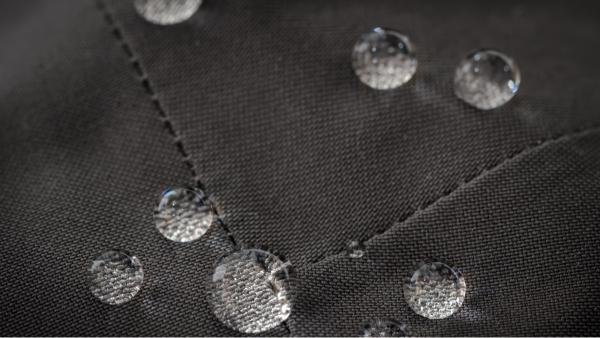
Key Fabric Properties
- Wicking: This property allows a fabric to quickly move sweat away from your skin, helping you stay dry and comfortable.
- Insulating: Insulating fabrics keep you warm by trapping heat close to your body.
- Waterproof: These fabrics keep you dry in wet conditions by preventing water from soaking through.
- Windproof: Windproof fabrics protect you from wind chill, maintaining your body’s warmth.
- Breathable: Breathable fabrics allow moisture from your body to escape, keeping you comfortable in various temperatures.
Basic Fabric Choices
Let’s take a closer look at some basic fabric choices you might come across:
- Wool: Wool is a natural fabric known for its excellent insulation and wicking abilities. However, it can be itchy and expensive compared to other options.
- Polyester/Nylon: These synthetic fabrics are light, durable, and quick-drying, making them perfect for outdoor wear. On the downside, they may not provide the same level of comfort as natural fibers.
- Fleece: Fleece is a soft, warm, and breathable fabric that’s great for cold weather. But it’s not very wind or waterproof, so it’s often used in layers.
Layering Basics

Layering is a useful strategy to help you adapt to changing conditions and body temperature fluctuations.
Base Layer
Starting with the base layer, it’s all about moisture control. Your base layer should be moisture-wicking to keep you dry and comfortable, no matter how much you’re sweating or what the weather’s throwing at you. So, for your underwear, bras, long underwear, shirts, pants, and bottoms, think fabrics like merino wool or synthetic materials. Trust me, you’ll thank yourself later.
Mid Layer
The mid layer is where your fleece and puffy jackets come in. They’re your main source of warmth, so choose wisely. Now, you might be wondering, “down or synthetic insulation?” Well, down is lighter, packs smaller, and offers more warmth for its weight. But synthetic insulation performs better when wet and dries faster. So, weigh your needs and make an informed decision.
Outer Layer
Moving on to the outer layer. This is your shield against the elements – this can be a shell/rain jacket or rain pants. The outer layer protects you from wind, rain, and snow, while also letting moisture (sweat) out. The goal here is to stay dry and maintain a comfortable body temperature.
Extra Layers
Carrying additional layers gives you the flexibility to add or shed layers as conditions change. It’s always better to have it and not need it than to need it and not have it.
Adapting Your Hiking Clothes for Each Season

You should adapt your hiking clothing to suit each season, so you can enjoy your hikes no matter the weather.
Let’s start with winter. It’s all about layering when the temperatures drop. You’ll need a base layer to keep you warm, a mid-layer to insulate and retain heat, and an outer layer to protect you from wind and snow. Don’t forget a warm hat, gloves, and waterproof boots!
Next up is spring. This is the time when the weather starts to warm up but can still be unpredictable. A lightweight, waterproof jacket is a must-have. Also, consider wearing moisture-wicking clothes to stay dry and comfortable.
When it comes to summer, it’s important to stay cool and protect yourself from the sun. Choose light-colored, breathable fabrics, and don’t forget your hat and sunglasses. Also, keep in mind that even in summer, it can get chilly at higher elevations, so always pack a lightweight jacket or sweater.
For fall, you’ll want to prepare for cooler temperatures and possibly some rain. Layering is key again, with a focus on warmth and moisture protection. Waterproof boots and a rain jacket are good ideas.
Sun Protection While Hiking

When you’re out on the trail, sun protection should be at the top of your checklist. Why? Because the risks associated with prolonged exposure to the sun are significant and can impact your health.
Firstly, let’s talk about hats. A good sun hat is not just a fashionable accessory – it’s a shield for your face and neck. Look for wide-brimmed hats or those with a neck cape. They provide excellent coverage, keeping the sun off your skin and helping to prevent sunburn. And even if you’re hiking on bright ground cover, the sunlight can reflect and still cause damage.
Next on the list, sunglasses. They’re not just for looking cool. Sunglasses act as a barrier that reflects harmful UV rays, especially useful when you’re hiking in the snow.
Also, don’t forget your sunscreen. Choose one with broad spectrum protection that is SPF 15 or higher and apply it to any exposed skin.
And here’s a little bonus tip for you: consider UV blocking clothing. It’s not anything miraculous or cutting edge, but it does offer an extra layer of sun protection.
Rain Protection While Hiking
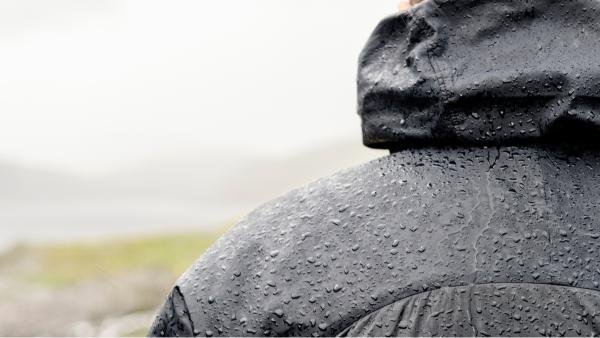
Rain jackets are undoubtedly the best choice for rain protection. When choosing a rain jacket, you want to look for something that is not only waterproof but also breathable. This will ensure that you stay dry from both the rain and your own sweat. Some great options include jackets made from Gore-Tex or eVent materials.
Regarding other gear, remember that your lower body needs protection too. Consider investing in waterproof pants or rain skirts. Also, Waterproof shoes or boots are a must-have if you’re going to be out and about in wet weather.
Best Hiking Clothes Tips
Before setting a foot on any hiking trail, you should consider your clothing strategy.
Check the Weather
Always check the weather forecast before heading out. A common mistake hikers often make is assuming the weather at the hiking destination will be the same as at the trailhead or nearby town. But the harsh truth is, weather conditions can vary dramatically from one location to another, especially in mountainous or coastal areas.
Use What You Have
You don’t need to break the bank buying new gear for every hike. In fact, you might already own suitable hiking clothes. Start by checking your current wardrobe for any moisture-wicking activewear. These clothes are designed to keep you dry by pulling sweat away from your skin.
When choosing hiking clothes, keep these criteria in mind:
- Comfort
- Durability
- Breathability
- Protection from elements
Embrace Layering
Layering is key to adaptability on the trail. By wearing multiple light layers, you can easily add or remove clothing as needed to stay comfortable.
Choose the Right Fabrics
The fabrics you choose for your hiking clothes can significantly impact your comfort. Opt for materials like polyester, nylon, or merino wool. These fabrics are lightweight, breathable, and quick-drying, making them perfect for hiking.
Balance Function and Fashion
While functionality should be your main concern when choosing hiking clothes, that doesn’t mean you can’t also be stylish! Look for pieces that balance function and fashion.
Ready to Hit the Trail?
The right attire can make a significant difference to your hiking experience. Opt for clothes that offer comfort and functionality, whether it’s breathable t-shirts, sturdy pants, or quick-drying materials.
Your clothing choices should serve you well on your journey, keeping you safe from the elements and allowing you to move freely.



